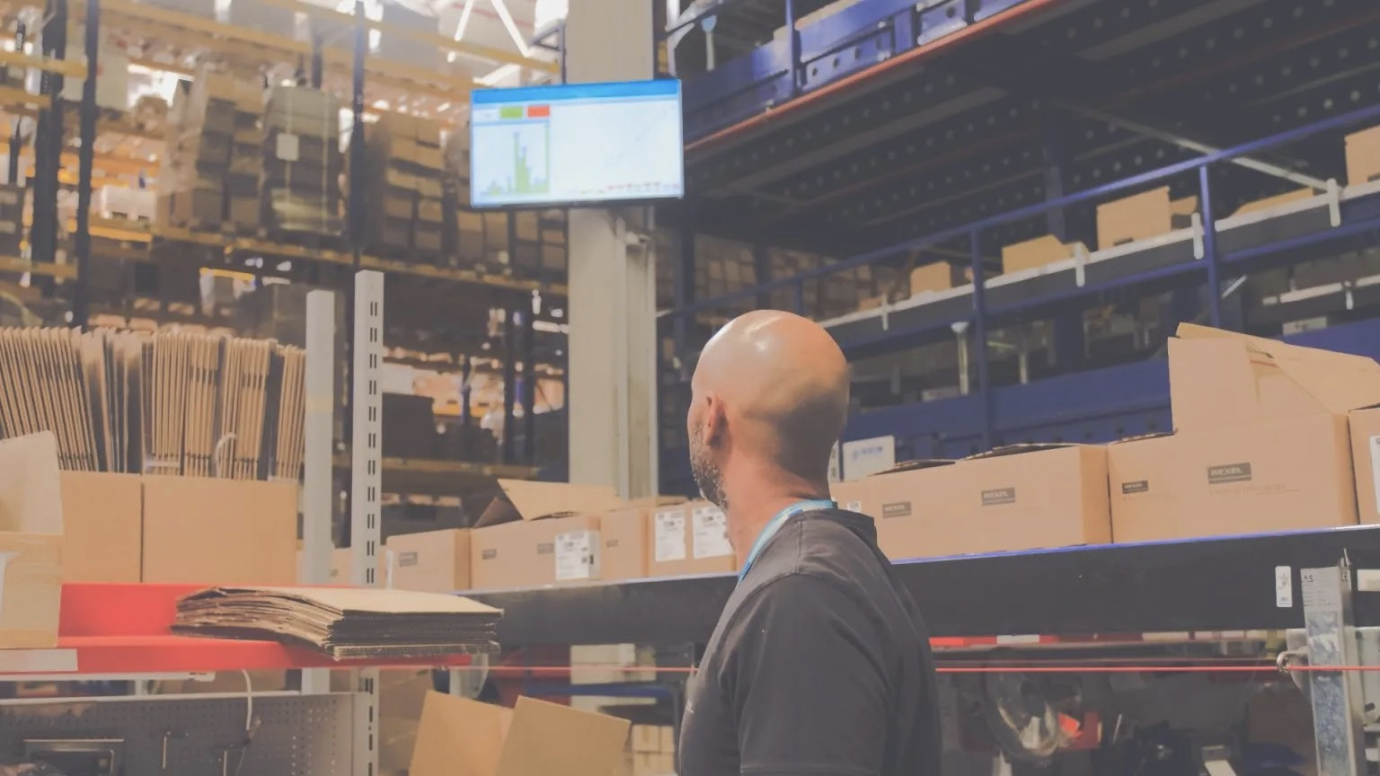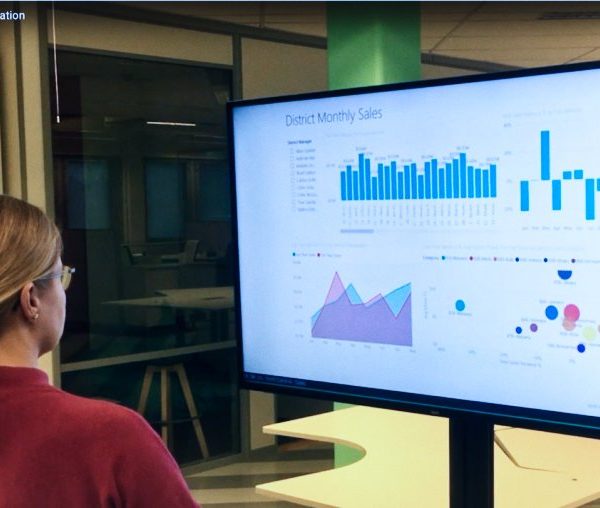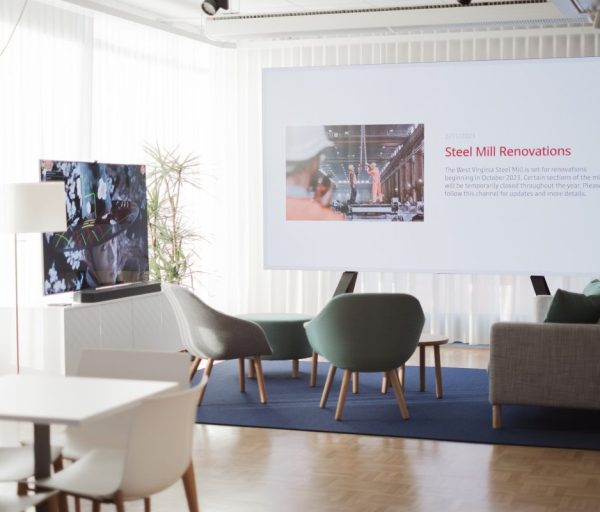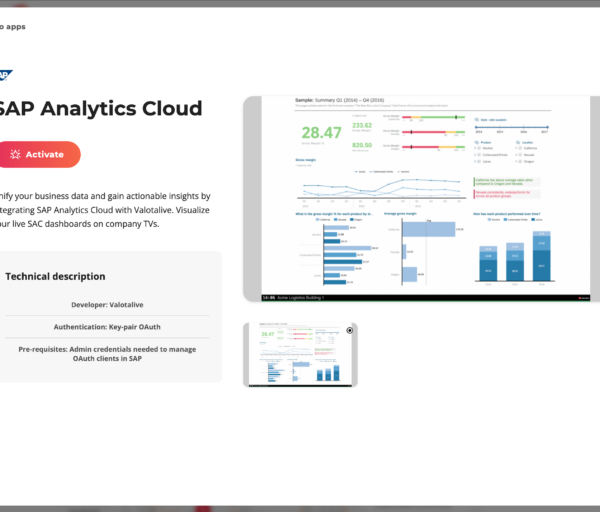Digital bulletin board refers to the use of digital displays, such as LCD screens or video walls, strategically placed throughout an organization to deliver dynamic content in the workplace. These screens are found in various areas like factory shop floors, break rooms, offices, lobbies or even on employees’ desks.
Traditional communication methods like email, memos, and bulletin boards often struggle to capture employees’ attention or convey important messages effectively. Digital bulletin board utilizing workplace digital signage software, on the other hand, offers a dynamic and visually appealing platform to communicate vital information. It enables organizations to share news, announcements, data dashboards (such as Microsoft Power BI), updates, and even employee recognition in a captivating manner. With eye-catching graphics, videos, and animations, digital signage creates a more engaging and memorable experience for employees.
With centrally managed digital bulletin boards, organizations can showcase company culture, values, and goals, reinforcing a sense of belonging and purpose among employees. Furthermore, a digital bulletin board software can display real-time data, metrics, and progress updates, keeping employees motivated and aligned with organizational objectives.
The limitations of traditional bulletin boards
In many workplaces, bulletin boards have long been a staple for communication. These physical boards adorned with flyers, memos, and notices have served as a primary means of sharing information with employees.
However, traditional bulletin boards are facing limitations when it comes to engaging and connecting with employees effectively. With the fast-paced nature of business today, information needs to be delivered in real-time.
Traditional bulletin boards fall short in delivering dynamic and up-to-date content. By the time information is printed, posted, and noticed by employees, it may already be outdated. This limitation can hinder the timely communication of urgent announcements, time-sensitive updates, or changes in procedures, ultimately impacting employee performance and organizational efficiency. In addition to poor engagement, updating the traditional bulletin board requires manual work that lowers the productivity of the organization.
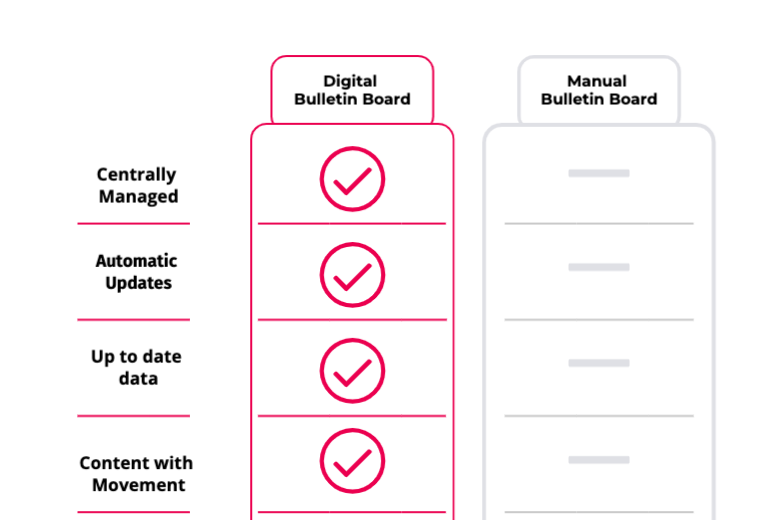
Benefits of using a digital bulletin board
In the realm of workplace communication, digital signage technology has emerged as a powerful alternative to traditional bulletin boards. While both serve the purpose of disseminating information, digital signage as the digital bulletin board software brings a host of advantages that set it apart from its static predecessor.
Dynamic and Engaging Content
One of the fundamental distinctions between digital signage and traditional bulletin boards lies in the presentation of content. Traditional bulletin boards feature static printed materials that can quickly become outdated and uninteresting. In contrast, digital signage offers dynamic and engaging content through the use of vibrant visuals, videos, animations, and interactive elements. This dynamic nature captures employees’ attention, making communication more impactful and memorable.
Real-Time Updates and Flexibility
Traditional bulletin boards rely on manual updates, requiring someone to physically print, post, and replace content. This process is time-consuming and restricts the ability to deliver real-time information. Digital signage, on the other hand, allows for immediate updates and flexibility. Content will be remotely managed and changed in real-time, ensuring that employees receive the most current and relevant information. This capability is particularly valuable for time-sensitive announcements, event updates, or changing circumstances.
Targeted and Personalized Messaging
Traditional bulletin boards provide a blanket approach to communication, with all employees seeing the same content. Digital signage, however, offers the advantage of targeted and personalized messaging. Content is tailored to specific employee groups, departments, or even individual preferences. By delivering customized information, digital signage ensures that employees receive content that is relevant to their roles, interests, and locations, enhancing engagement and improving the overall effectiveness of communication.
Centralized Management and Control
Managing multiple traditional bulletin boards across different locations can be a logistical challenge. Digital signage overcomes this by offering centralized content management and control. Organizations can use cloud-based platforms or content management systems to remotely update and schedule content across all digital displays simultaneously. This centralized approach streamlines the communication process, ensuring consistency and efficiency in messaging while reducing the administrative burden.
Customer Success Story: Digitizing shop floor bulletin boards
The challenge
A global manufacturing company used manual and semi-manual bulletin boards to reach their non-desk workers. They updated the boards twice a day throughout the multiple production sites they have in multiple countries.
The prints of the KPI reports and news announcements were pinned on the boards in some of the production sites. In other sites, they had a digital signage system in place, but the updates still required manual work. They would take screenshots of the dashboards and upload the images on the displays using legacy content management software.
The staff of the company calculated that, in total, they would end up using 30 hours per day doing these updates. In addition to that, those KPI reports are updated only twice a day.
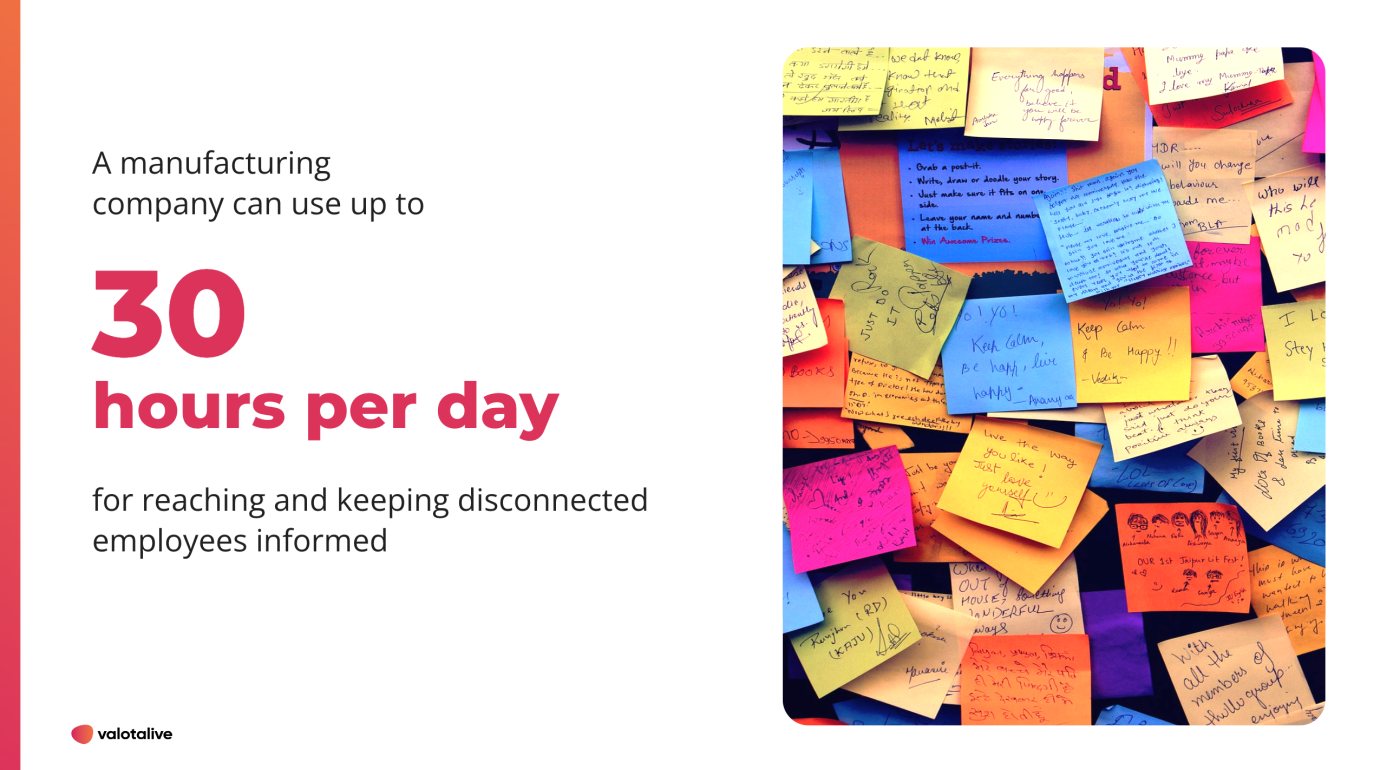
The solution
The objective was to automate the process end to end. The customer connected their digital screens in production facilities with Valotalive digital signage software to enable centralized management. In addition to this, customer replaced the legacy software in those sites where it was used.
They connected Valotalive with the business intelligence software Microsoft Power BI. The Power BI app in Valotalive updates the content automatically on the screens. As the data in the backend updates, the screens will follow. The process is end-to-end automated and enables them to display different reports on different sites. The line managers can also update safety news and important announcements on the go, to selected screens, using their laptop or mobile device.
The new process – the fully automated digital bulletin board – saves them manual work up to 30 hours per day and makes sure the reports are up to date throughout the day.
How to Calculate Your Business Case for Bulletin Board Digitization
Before you can go ahead with the digitization of your bulletin boards you might need to present a business case for it. The business case can be quite straightforward, typically consisting of time savings and up-to-date content.
Time savings
Identify all the manual processes that are involved in the daily updates related to the bulletin boards. Estimate an hourly fee (average salary) for the work. Multiply it by the total hours used updates per day per site. Multiply this number by the total amount of the sites.
The manual work comes from taking screenshots or preparing the messages in some editor, printing the content and taking it to the bulletin board and pinning it in place there.
Content / KPIs up to date
When using digital bulletin boards the content and/or reports are updated every 15 minutes or even faster. Compared to manual bulletin boards where the data is updated once or twice a day, this provides a big value increase for the operations.
In addition to the cost savings -> The up-to-date data can help companies increase their quality, increase productivity and help to increase employee engagement.
Example business case calculation
Hourly fee for the calculation: 33 USD / hour (average salary – source: Bureau of Labor Statistics (BLS)
Hours used per day per site (boards updated twice a day): 1.5 hours total. Assuming you can save all this time by automation of the content updates. If not all updates or posts can be automated, adjust your number accordingly.
Number of sites: 12
Total cost of manual updates per day: 33 USD * 1.5 hours / site * 12 sites = 594 USD
Total cost manual updates per month: 30 days * 594 USD / day = 17 820 USD / month
The total amount of cost savings 17 820 USD per month
This is the total cost savings when manual updates can be replaced with automated content updates.
The total amount of cost savings 17 820 USD per month
A Business Case Example based on customer researches – Manufacturing Industry
How to Set up Your Digital Bulletin Board
Step 1 Plan the content
Plan the content you’d like to display on your digital bulletin boards. Identify the most important content. Companies in manufacturing use bulletin boards for operational Dashboards, news and announcements as an example.
It is good to evaluate if you update this information in your business applications already. Maybe the news posts are in SharePoint or the dashboards are located in Microsoft Power BI or Excel.
Step 2 Choose the right platform
Choose the digital signage software that connects with these above mentioned applications. This makes your life easier as you can connect with these to automate content updates.
Valotalive as an example comes with turn-key integrations with Google & Microsoft business applications. Activate your Valotalive account here – click the link
Step 3 Purchase the hardware
Buy the screens for your locations. Any full HD or 4K screen monitor or TV with HDMI input will do. Or maybe you have such displays in stock already?
Purchase the computers that will work as your media players. A media player connects your display with Valotalive cloud. You can use Microsoft Windows or Google ChromeOS, depending on your preference. Some good recommendations are Asus Mini PC PN41(for Windows) or HP Chromebox G3 (for ChromeOS)
Step 4 Pair the displays with Valotalive
Download Valotalive from the Microsoft Store or Chrome Web Store on your computer. Then run the application. Once the application opens you will see an activation code on the screen.
Read more about pairing your screen with Valotalive.
Step 5 Set up your Content & Go live
Once you have your display(s) set up, it is time to connect them with your content.
Applications in Valotalive connect with different business systems, like Microsoft Power BI, SharePoint or Excel to name a few. Read more about activating your apps
A Flow is a programmatic playlist that displays content from multiple apps. You can adjust the weight (importance) of the content in Flow settings. This makes it possible for you to give more screen time to the most important content. Read more about the Flow setup.
Assign your Flow to a display or a display group. Read more about assigning your Flow to a display.
Enjoy Your End to End Automated Digital Bulletin Boards
Forget about it!
You have your displays in place, you have connected your business apps in Valotalive and the Flows are running on the displays. You can now forget about the management of your bulletin boards! As the data in the backend, Power BI reports as an example updates, the screens will follow.
In case you’d like to add the possibility to post ad-hoc announcements or posts, activate My Content Channels. My Content Channel makes it easy for local managers to post news, announcements and updates using their mobile devices or laptop.
Thank you for reading. If you find this article useful, please feel free to share it with your network.
Start your free trial and experience the innovative world of Valotalive digital signage for yourself.
Learn more about Valotalive and digital signage use cases.
